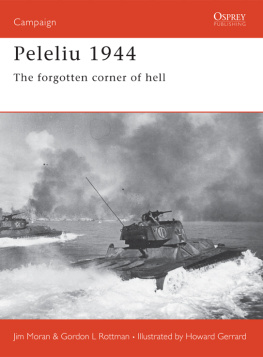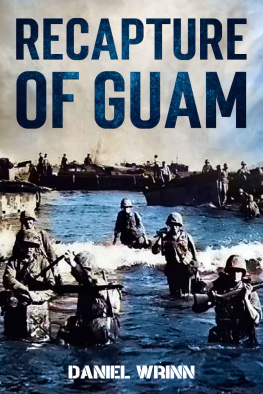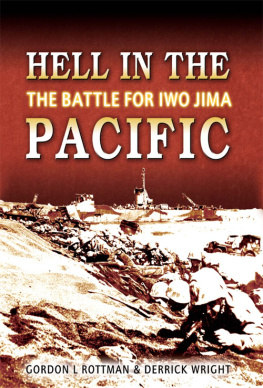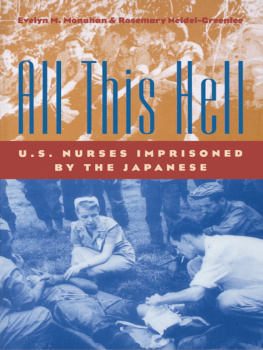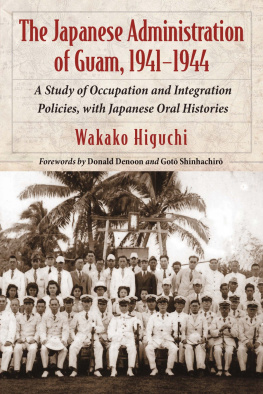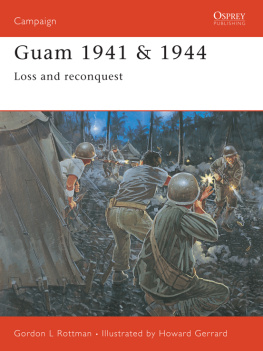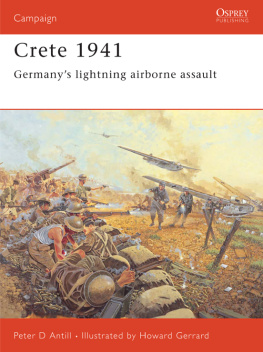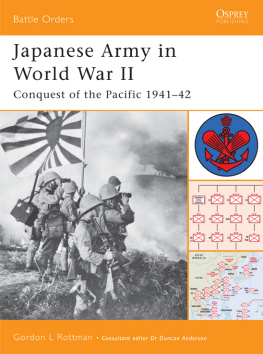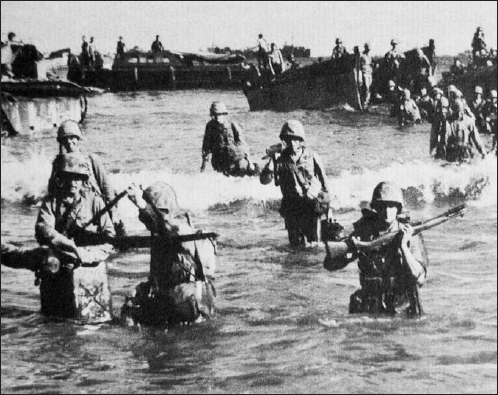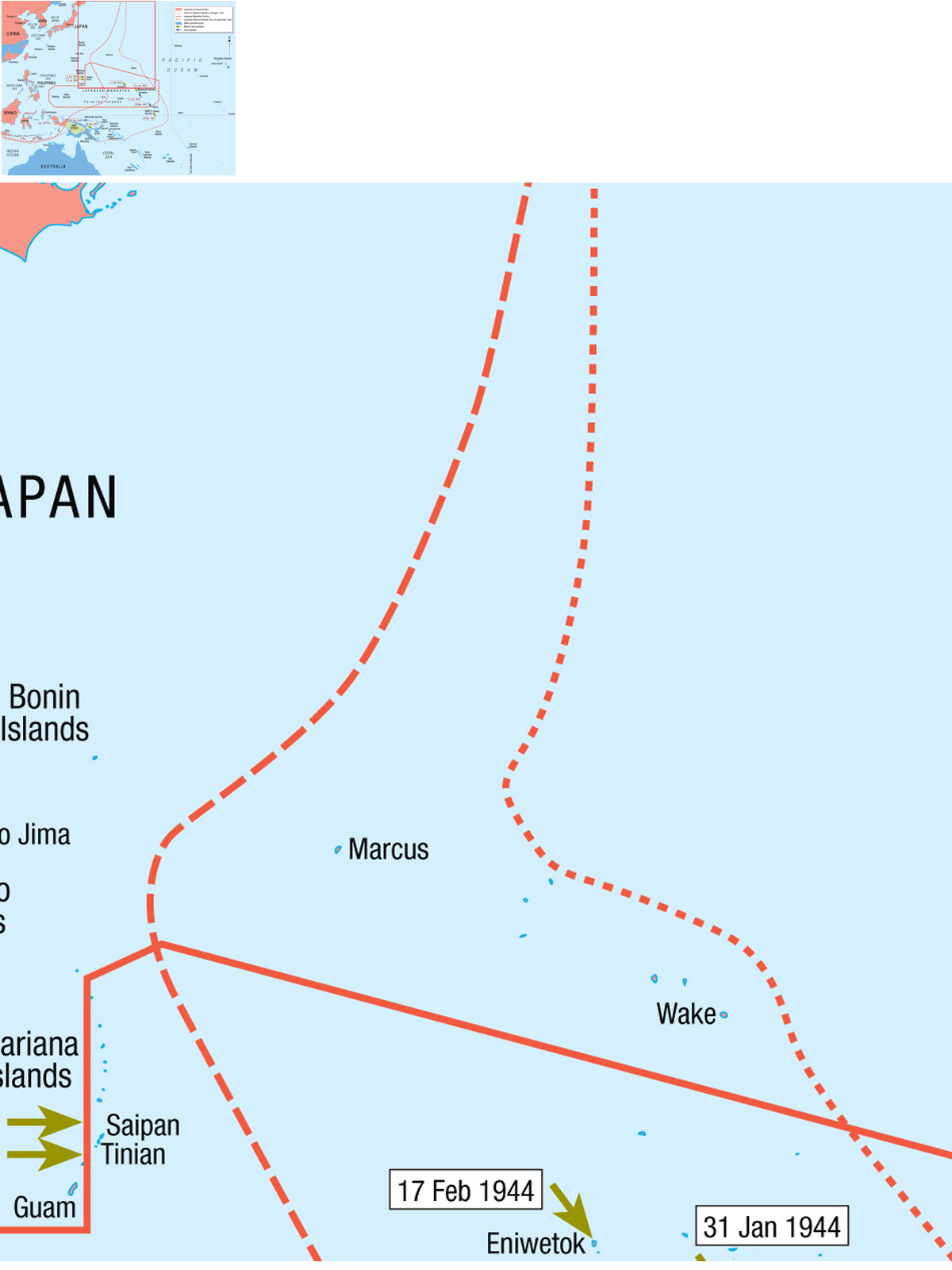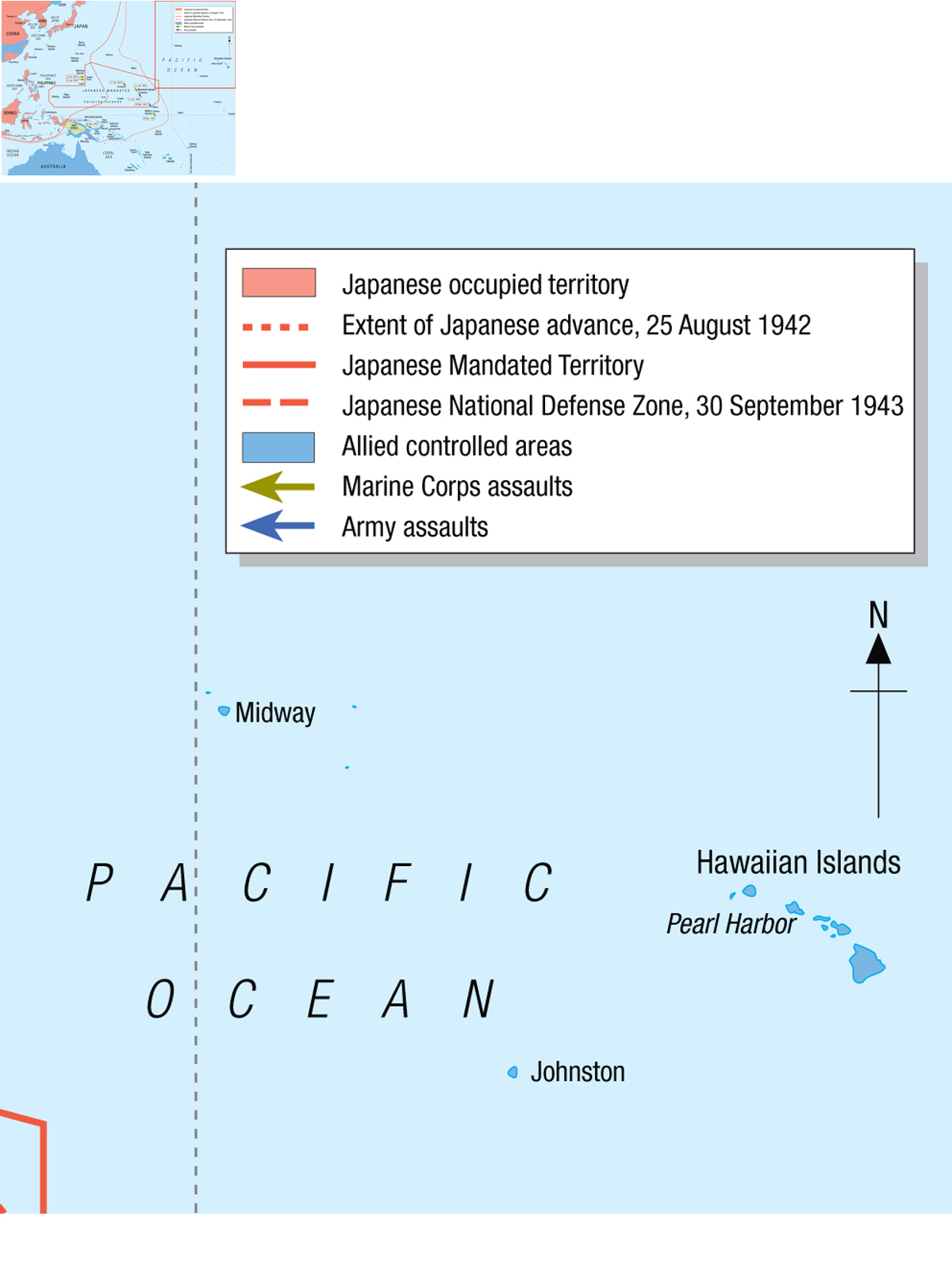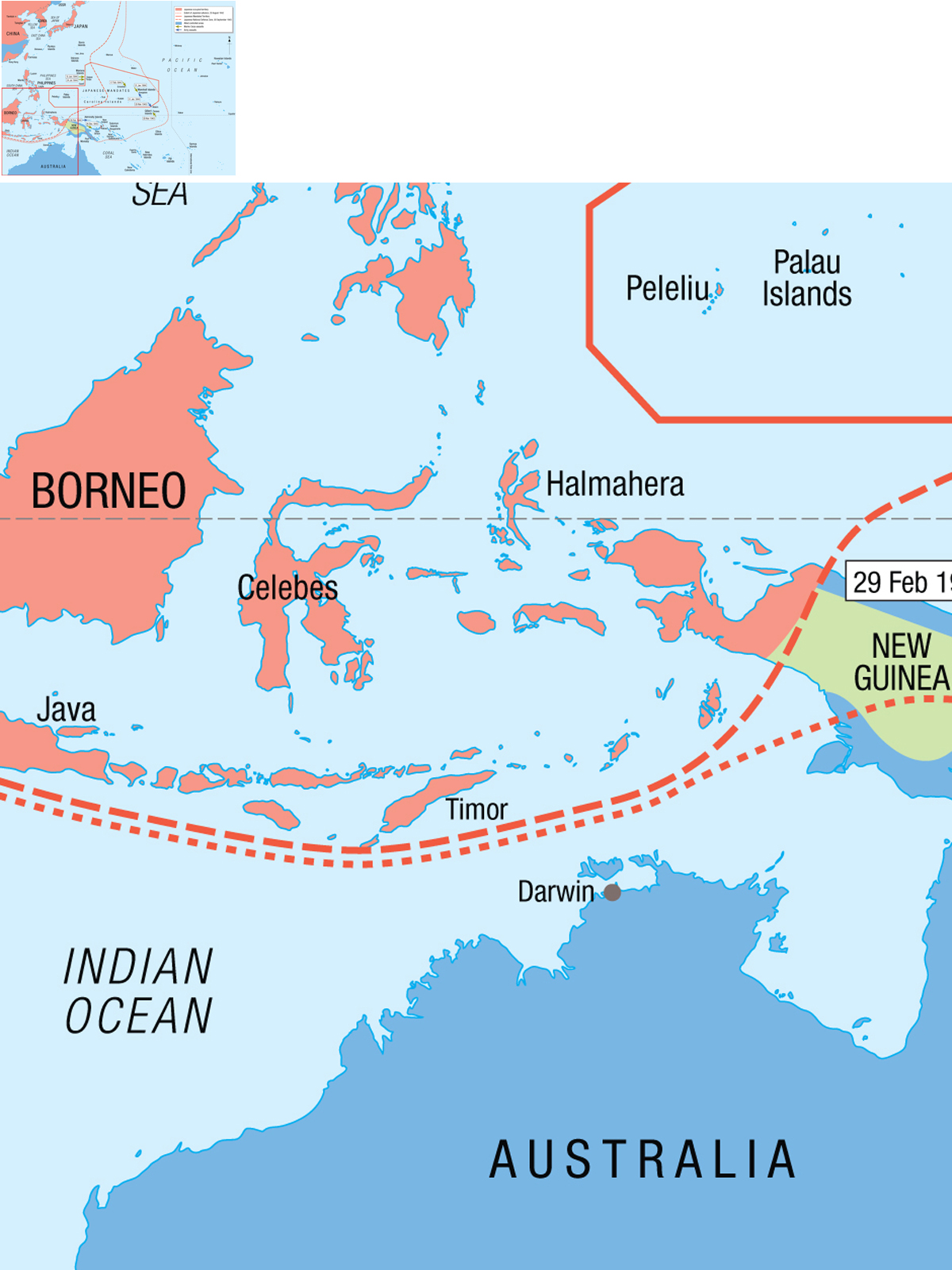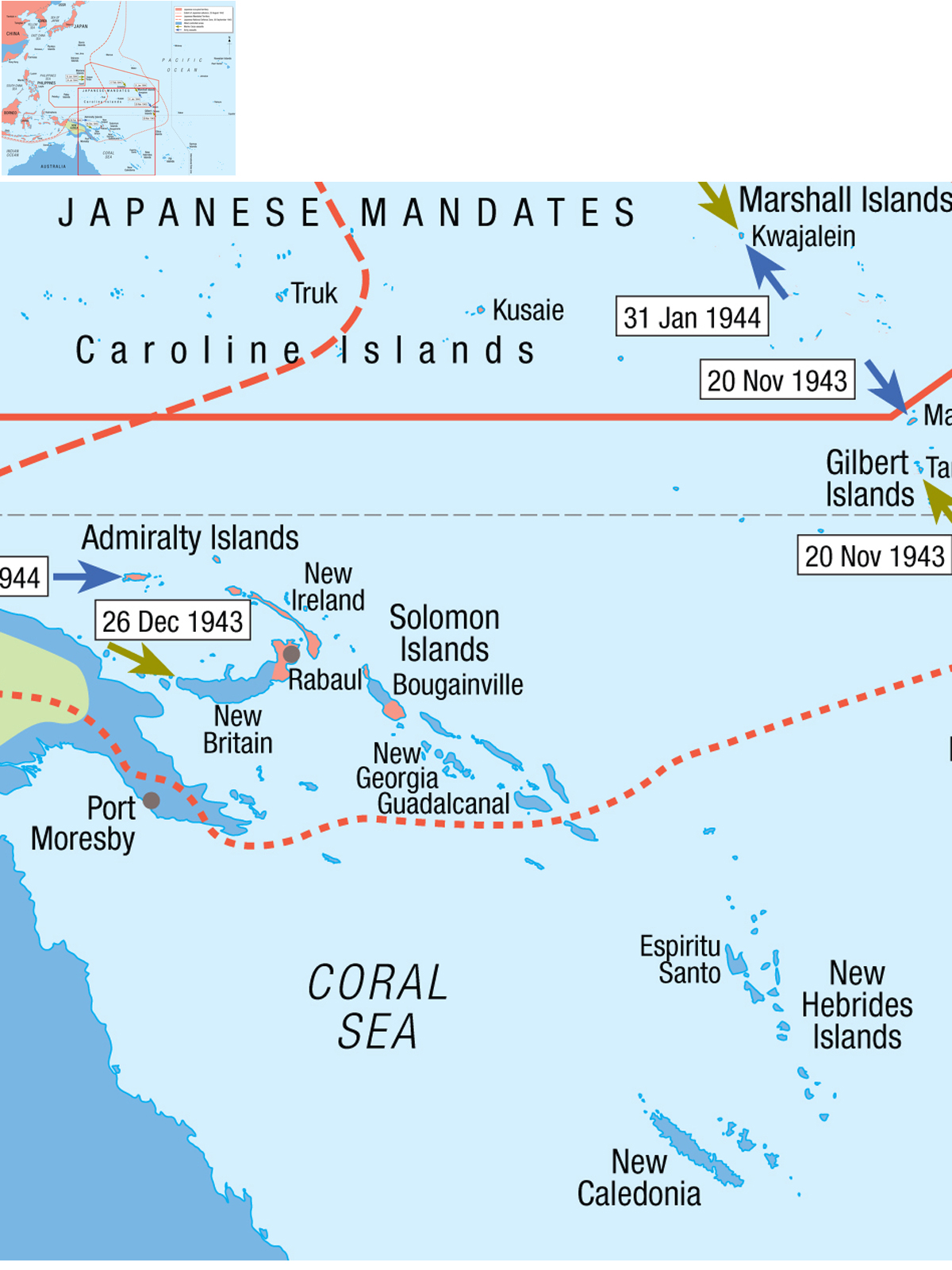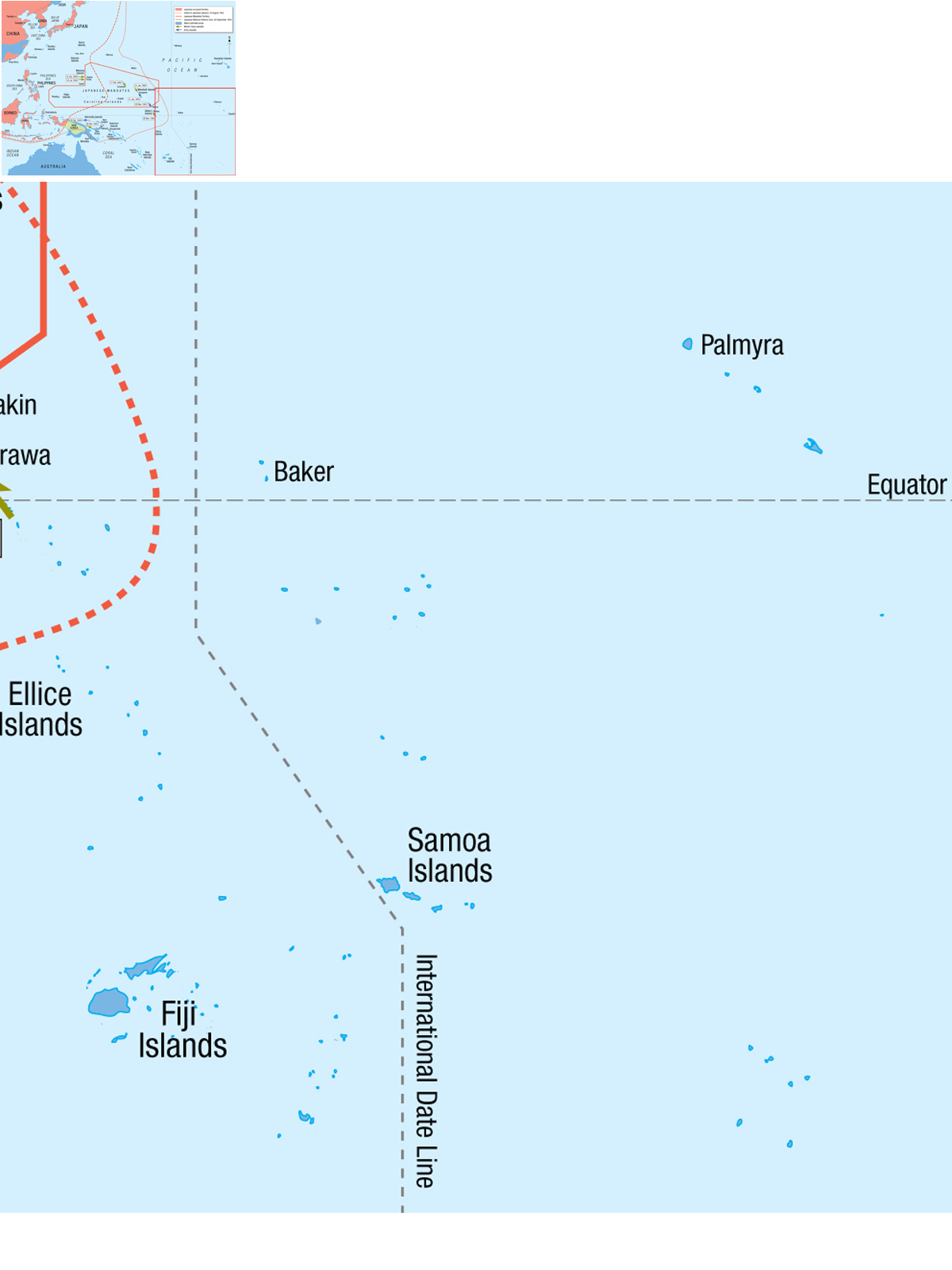Campaign 139
Guam 1941 & 1944
Loss and reconquest
Gordon L Rottman Illustrated by Howard Gerrard
Series editor Lee Johnson Consultant editor David G Chandler
CONTENTS
INTRODUCTION
T his book studies two battles. The seizure of Guam in December 1941 was one of the Imperial Japanese armed forces first victories in the Pacific War, known to the Japanese as the Great East Asian War. The July 1944 battle followed on the heels of the American assault on Saipan and the battle of the Philippine Sea, which advanced the US forces into the heart of Japans pre-war territories.
In 1941 Guam was a rather exposed American possession situated at the south end of the Marianas with Saipan, a significant Japanese naval and air base, only 100 miles (161km) to the northwest. Only 400 Marine and Navy personnel and just over 300 Guamanian militia and police defended the island. Their largest weapons were a few .30cal machine guns; there were no fortifications or aircraft, and only one minesweeper. No reinforcements were planned or expected. After a token resistance the defenders went into captivity and Guam endured two and half years of repressive occupation.
ORIGINS OF THE CAMPAIGN
A series of high-level conferences, primarily between the US president, the British prime minister, and the chiefs of staff of the combined armed forces (but occasionally including other heads of state), was the mechanism for long-range planning for the Pacific War. However, the Marianas were not included among the objectives agreed at either the Casablanca Conference in January 1943 or the Trident Conference in May of the same year. The Navy had argued strongly at both conferences in favor of using its expanding fleets to seize the Marianas, as a springboard for the liberation of the Philippines and the invasion of Japan. General Douglas MacArthur was committed to liberating the Philippines via a drive through the Southwest Pacific, and opposed a major thrust through the Central Pacific fearing it would divert resources; thus the Navy were ignored. Ironically, the greatest champion of the Central Pacific route was one of the Navys most vehement opponents. With the new B-29 Superfortress now available, the Air Force needed bases from which to operate these monsters. The only bases currently within range of Japan were in China, forcing the Superfortresses to operate at the limits of their capabilities. In addition, supplying the aircraft in China with fuel, spares and munitions was a logistics nightmare, and the Air Force pointed out that airbases in the Marianas would reduce the roundtrip to targets in Japan by 1,200 miles, and could be supplied direct from the United States. At the Cairo Conference (Sextant) in December 1943, the Navy and Air Force joined forces and successfully argued that twin attacks through the Central Pacific and the Philippines was the most effective method to defeat Japan: to obtain objectives from which we can conduct intensive air bombardment and establish a sea and air blockade against Japan, and from which to invade Japan proper if this should prove necessary. On 27 December 1943, the Central Pacific Operation Plan Granite II was completed with a provisional date of 15 November 1944 for the seizure of Saipan, Tinian, and Guam.
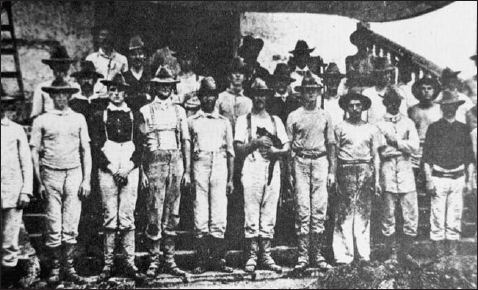
Marines outside the Marines Barracks, Sumay, Guam in 1899 soon after the United States received it as a possession. The United States paid Spain 20 million dollars for the Philippines, Puerto Rico, and Guam after winning the 1898 Spanish-American War.
With the campaign underway the Granite plan almost inevitably evolved. It began precisely on schedule on 31 January 1944 with the assault on Kwajalein Atoll in the Marshalls. The speed with which this operation was completed allowed Eniwetok to be seized two months early, in February rather than May. Douglas MacArthur had not given up, however, and once again sought approval for his plan. His powers of persuasion must have been formidable as he even convinced some on Admiral Chester Nimitzs Pacific Fleet staff that an assault via New Guinea and the Philippines was preferable to a drive through the Central Pacific. However, when Admiral Earnest King, Chief of Naval Operations, was presented with the plan he rebuked Nimitz for his apparent lack of resolve. The Marianas assault was moved forward two weeks and in mid-February the Gibraltar of the Pacific, the Japanese naval base at Truk in the central Marshalls, was neutralized in a series of attacks from the sea and air. The route to the Marianas was suddenly open and MacArthur was also able to step up his operations, seizing the Admiralty Islands at the end of February 1944. At the planning conference in Washington in February and March, the schedule for the remainder of the Pacific War was established. Numerous objectives were abandoned and many others altered with the Joint Chiefs of Staff agreeing six phases for future operations. Number 4 was, Establishment of control of the MarianasCarolinesPalau area by Nimitzs forces by neutralizing Truk; by occupying the southern Marianas, target date 15 June 1944; and by occupying the Palaus, target date 15 September 1944.
It would have been just as easy to secure only Guam. Politically this would have removed the stain of the US defeat in 1941, and militarily would have permitted the construction of the airfields from which to bomb Japan. Although Saipan and Tinian could have been neutralized with naval and air power, it was decided that the considerable enemy forces on the islands should be destroyed. In addition, airbases on the more favorable Tinian would be 100 miles closer to Japan.
Virtually the entire resources of Admiral Raymond A. Spruances Fifth Fleet, elements of the Pacific Fleet Service Forces, Pacific Fleet Submarines, and South Pacific Force Land Based Air Forces; two Marine amphibious corps, three Marine divisions, two Army divisions, and a Marine brigade would be committed to Operation Forager, the conquest of the Marianas.
Good quality intelligence was needed to support operational planning, and while Guam had been under US control for 43 years, the available information was sometimes poor and incomplete. Various pre-war studies had been accomplished to support the development of defenses on Guam and these provided some information. Maps of the island were often inaccurate in depicting roads and terrain contours, although harbor and offshore charts proved accurate enough. Another source of information were Navy and Marine personnel who had served on the island before the war. Guamanians serving in the Navy were also a valuable source. A further source, and one seldom available to planners, also proved valuable to some of the landing unit commanders. From 1936 one of the training exercises conducted by Marine Corps Schools for field grade officers was the Guam Problem. This was a planning exercise in which officers studied the defense and capture of Guam from a hypothetical enemy. Many of the Marine commanders who would assault the island had participated in this classroom exercise and found they had a clearer picture of the terrain and natural obstacles.
Next page

